
09 Feb Preventing and Improving Osteoporosis Through Lifestyle

Coaches Ed and Sam here with a knowledge bomb sprinkled with our usual puns and anger at both the world we live in and the industry we’ve chosen to work in.
Ed handed me a review of a study recently and it’s been sitting on his desk waiting for the right time…and luckily, or unluckily, the right time for some quiet composure came forced this past few weeks! While Ed’s lengthy background in outpatient orthopedics and education has primed him into our current professional pathway, I genuinely think it drives him bonkers as he looks at the data, the facts, and the proof, yet sees what’s actually happening in the world of senior fitness, and today related to Osteoporosis.
Oh good Lord, Sam…Osteoporosis? What a bore! Half of us aren’t old enough to worry about it and half of us already have it, so what gives? It’s easy:
- It’s preventative:
- It’s the same as your diet, that I guilt you and hound you about all the time: it’s cumulative. You can bank your general health with your diet, and you can bank your bone health over the years by knowing what to do from your youth through adulthood and beyond.
- Also, it’s reversible. Even if:
- you ignored the preventative measures over the years (you ate like a bird or your activity level was that of a sloth) and fell victim to this silent condition, or
- you encountered early menopause naturally or through a health challenge, or fell victim to medications affecting your natural hormone progression
- And finally, you have people who care about you (likely us!), and regardless of your age, falling victim to a hip fracture from a fall, or fracturing your spine making the bed or opening a window is not and should not be in your future.
Dorothy Parker once said: “You can’t teach an old dogma new tricks”. This play on words is a perfect example of our approach to lifestyle diseases, as current protocols are heavily founded in pharmaceuticals without appropriate energy and effort to correct the root cause of the disease or condition as the first line of defense. It is further complicated by this egregious social phenomenon that coddles senior citizens. From grocery carry out to to the degradation of recreational sports (ever heard of chair aerobics?🙄), seniors aren’t voluntarily inactive or lazy. Society is telling them to be. The way things once were is better than the way we are now. It’s not good now, but it can be better, and we’re about to outline “how”.
Osteoporosis is the brittle bone disease that predominantly (not solely) affects small-framed or thin women over 50. There is some genetic predisposition to developing osteoporosis according to the literature, and being white or caucasian can also contribute to greater risk. These are the general risk factors you’ll find when you Google search “risk factors for osteoporosis”. What you’ll see less of, but what also contributes to both osteoporosis and the risk of hip fracture in a fall (largely related to weak bones) is being a vegetarian, having sarcopenia (wasting of muscle tissue), and lack of physical activity (repeating sarcopenia a little there), specifically resistance training. While we can’t help our age, our race, or our genetics, we can manage our diets, our activity, and how strong we are. But finding a program to promote and cause a change in these areas, specifically designed for seniors is tough.
The IDEA Fitness Journal’s Spring Issue announced that “Baby boomers have driven the movement toward integrative medicine and want and need fitness services. Right now (in 2022), U.S. boomers are the second-largest population group with 69.6 million people between ages 58 and 76. Thirty-five percent of baby boomers exercise but are underserved by the fitness industry. Members of this generation are redefining aging, continuing to enjoy competitive sports and active leisure over their lifespans.” While our society is on a rampage about social injustices related to exclusion, we feel there’s an essential injustice occurring as seniors are excluded from the types of services needed to keep them healthy and living independently. And if you read “essential” as greater than social, you are correct – that’s what we mean.
Studies show that while “physical activity is one of the most promising nonpharmacological, noninvasive, and cost-effective methods of health promotion, statistics show that “only a small percentage of middle-aged and older adults engage in the recommended amount of regular exercise”. Again, defining exercise as a type that is effective is the key here. Walking is exercise, but it’s not enough. Gardening is exercise, but it’s not enough. Retirement years typically bring more time…the perfect opportunity to work on oneself. The perfect opportunity to make a plan that will keep you active, healthy, and happy for the next 20, 30, or 40 years of your life.
And since we know that “there are no nonresponders to resistance-type exercise training in older men and women”, why is it so hard to lead a horse to water? Or, rather, to make seniors thirsty enough that they want to drink? Our focus here is Osteoprosis, but you could easily insert any of the lifestyle-related metabolic diseases and use the same content to prove a point.
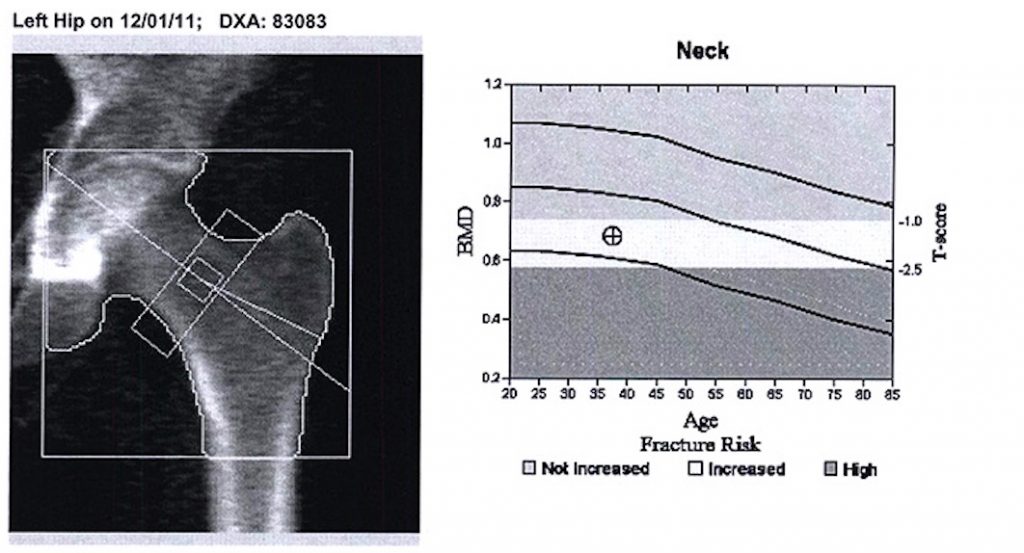
OSTEOPOROSIS PREVENTION AND TREATMENT
Most people who know Ed and me, and know our backgrounds both professional and “lifestyle” (from bodybuilding + “My Plate” to distance running, to CrossFit + Paleo), neither of us have been sedentary and we’re both “living the lifestyle we promote”. So sometimes it is hard for us to grasp a lifestyle that is sedentary or unmotivated to move a lot. This is probably why we’ve designed this program to not only produce results but also be inviting, fun and peer-driven.
What we do is not solely focused on Osteoporosis. However, it’s a nice side-effect that our current program and recommendations can directly prevent, improve and/or reverse Osteoporosis.
Recently, several studies have come out further reinforcing what we know to be beneficial for Osteoporosis. One study reinforced specific types of movement for Osteoporosis, and another study focused on diets that are linked to hip fractures caused by falls, eluding to weak bones.
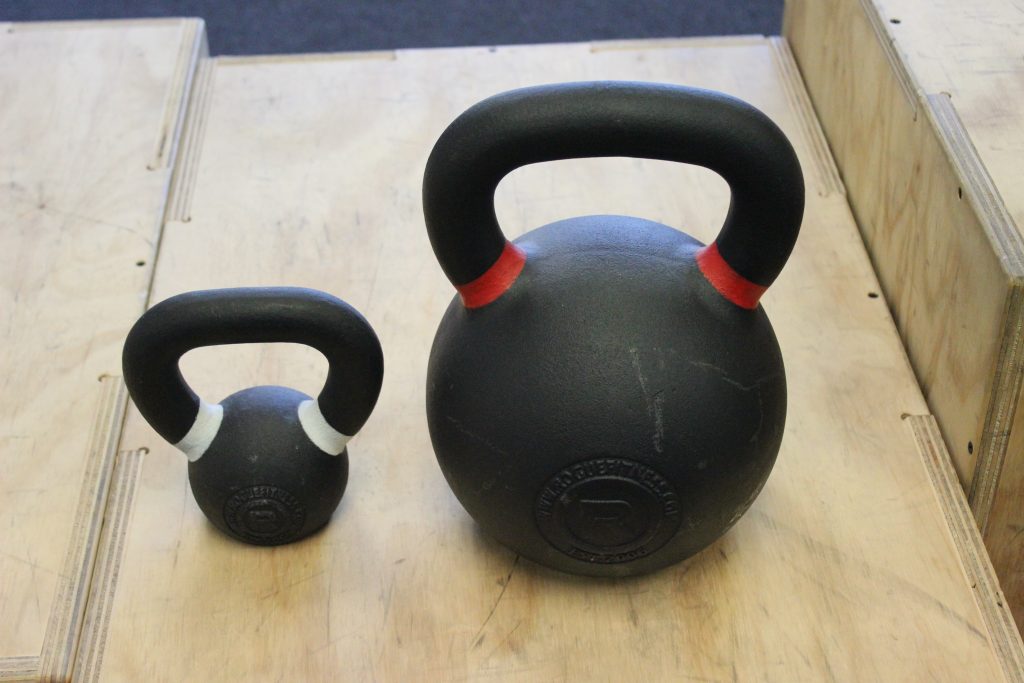
RESISTANCE TRAINING
Our bodies were meant to move. If you look back to our ancestors, whose DNA has paved our way, our bodies need to move. Our ancestors moved a lot, and they “did” a lot. And when they moved, they were lifting, carrying, and oftentimes “working”. So it’s no surprise that for building bone, their primitive lifestyle was superior to ours in many ways, including building bone.
Resistance training for the purpose of building bone means a few things. It means providing a muscle or group of muscles with a level of resistance or challenge that can stimulate muscle protein synthesis (growth) when provided with the right environment. By environment, we mean enough protein and nutrients to allow that change to occur. More on diet later. In essence, resistance training is supposed to be a challenge (read: hard). But we’re humans…and we can do hard things. (And we should!) We can expand upon “resistance training” by further ensuring we are providing our bodies with a PROGRESSIVE resistance from which to create change and continue our progress. Using the same load over a duration of time can cause a stall in progress as our bodies easily accommodate a resistance once they get used to it and can easily perform the task at hand. That’s where different implements come into play (barbells, dumbbells, medicine balls), and increasing the load on a regular basis is important. This is how we get stronger. And this is how we increase bone density – by progressively increasing our strength through the loads we work with.
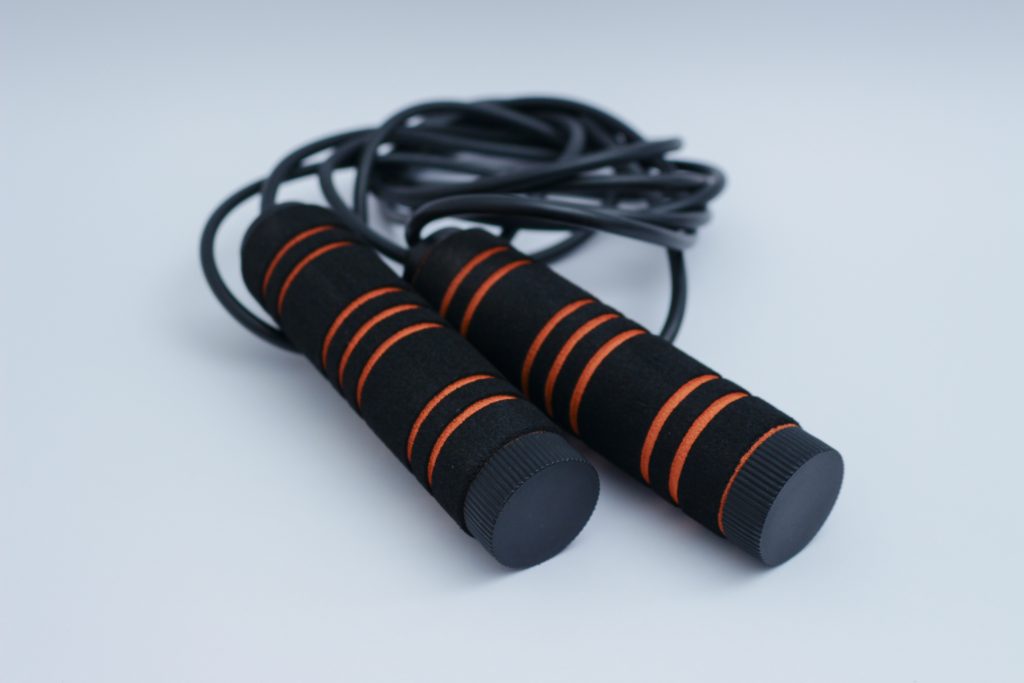
IMPACT
What the heck is this? A fun new abbreviated version of an old word. Remember “high-impact” and “low-impact”? These days we’re just saying “impact” and placing the adjective as needed. Ideally, our prescription would include high-impact training – jumping and landing and/or running. But some folks a) can’t tolerate this due to orthopedic concerns or osteoporosis (it presents a risk) and b) shouldn’t jump and run because of balance and other vestibular or neurological reasons – for safety’s sake. Regardless of where the person presents to us, we can make this happen and science says we need to. Impact stimulates the muscles, tendons, and ligaments, and subsequently the bones, helping to improve the density of the bone structure. Jumping is our favorite – and even if you can’t jump, we have supported ways to help progress someone toward a safe version of some type of impact or ballistic movement.
We see many people who train with us who have conditions that make jumping hard or contraindicated:
- osteoarthritis of the ankles, knees, hips, and spine,
- osteoporosis,
- and those with existing balance disorders and neuropathies.
However, this doesn’t mean they can’t. It just means that our starting point is different than with a younger person without these conditions. Any movement worth doing is scalable or adaptable to almost any condition or illness we have been presented with. And, it’s worth it to work on that adaptation of the exercise because as these studies say, the reward of trying and working through these movements is greater than the risk of not trying.
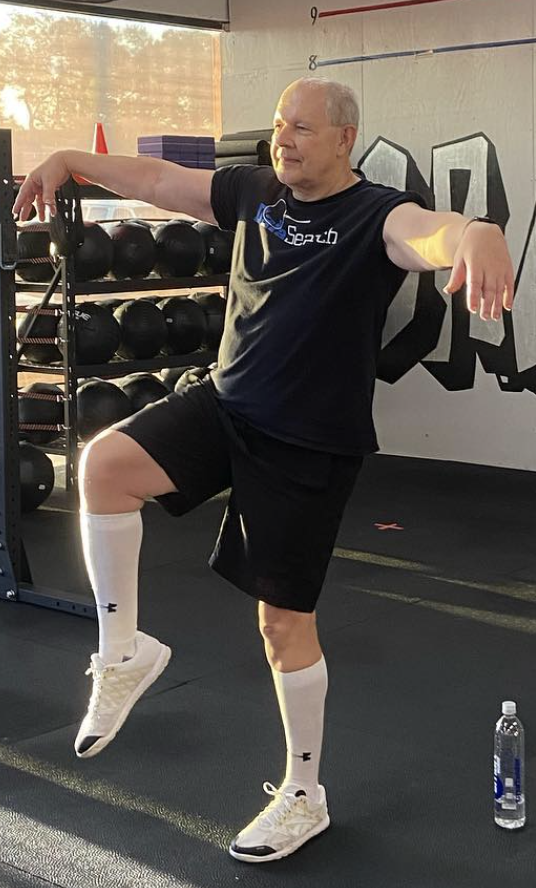
BALANCE
NOT WHAT YOU THINK! While there is some legitimacy in standing on one leg, closing your eyes, and trying to balance, it’s truly not the most functional way, nor the best, to improve balance.
When we speak of balance we speak of the steadiness you envision in someone with “balance” – steady and sturdy – a tightrope or balance beam walk, right? No wavering. And most of the time our eyes are open in life so let’s discount the whole eyes closed thing! We also think of someone catching their foot on a tree root and starting to fall…but being able to put their other foot out in time to catch themselves, right? So, we’re also talking about reaction time, and general strength to accomplish that “trip” without falling. One of the biggest eye-rolls I give is when someone tells me “that’s a tripping hazard”. 🙄 LIFE is a tripping hazard. So let’s prepare for it, not be afraid of it. And some may say: “but I could hurt myself”. True. The question is, is that what you are focused on? Or are you on a path to get stronger and develop a faster reaction time so when it DOES happen, you’re better prepared? Be on the offense – not the defense.
While we regularly perform the obligatory balance training (standing on one leg), we prefer to spend our energies in the gym improving general strength using odd objects like barbells, dumbbells, kettlebells, and medicine balls, as we believe the stronger someone is and the more stable they are, the less likely they are to fall. The implements we use are preferred over machines and seated movements. When a person has to balance their body AND whatever form of load we give them (e.g. two dumbbells), the subsequent result is greater stress on the body in total due to the need to remain stable and balanced while moving in time and space with a loaded object. You can see how being seated and grounded in a machine takes a lot less effort regardless of the load. Again, here we believe the reward FAR outweighs the risk. Additionally, having many different options to load a person – and beginning with very light loads and having small incremental increases in those loads also contributes to the safety of the exercise program.
Finally, as a caveat, and as a result of our training, we (and our athletes) LOVE the Olympic lifts. The what? The Olympic lifts, specifically the hang power clean. Without boring everyone with the how-to, it’s basically jumping a load from the hips to the shoulders. What that means for our seniors is IMPACT plus RESISTANCE TRAINING. PLUS, the total body stress from accommodating the moving load in time and space improves balance and reaction time. That’s a lot of words, but a relatively simple movement that produces a gigantic result.
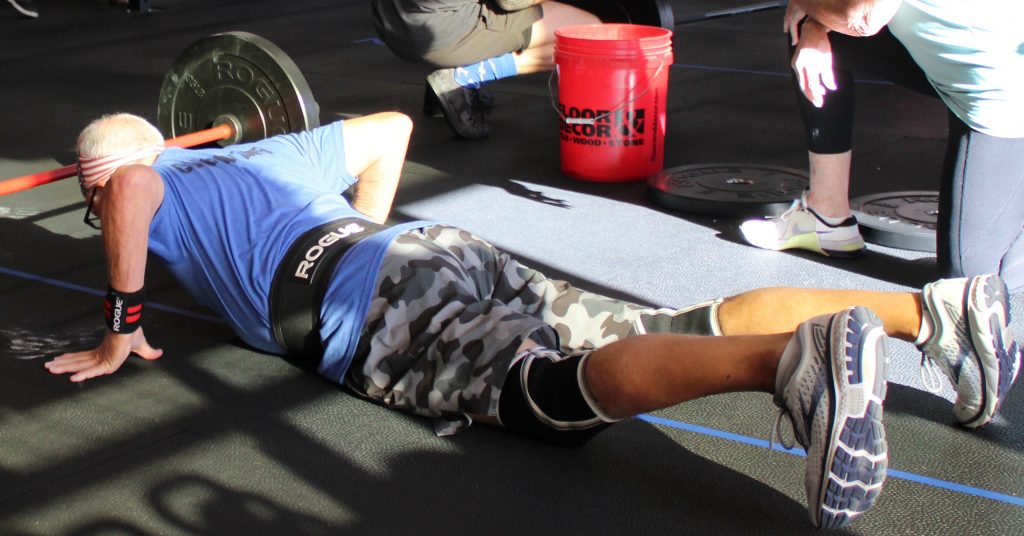
SPINAL EXTENSION EXERCISES
Exercises that improve posture and spinal extension potentially reduce the risk of falls and vertebral fractures. ALL HAIL THE BURPEE! Just kidding…well, sort of.
Exercises that pull the shoulder blades and head back in line over the shoulders, and help foster a subtle extension of the low back help strengthen the muscles on the back of the body that can become weak and lead to that hunch-backed, forward head posture that Osteoporosis is known for. Constant daily nagging: Stand Up Straight! also works! So many of the movements in a functional exercise program help reinforce these types of exercises:
- banded pull-aparts
- ring rows
- bent over rows
- pull-ups (and their variations)
- burpees
- pushups (the plank position)
- overhead press with full shoulder extension,
- lat pull downs
- deadlifts done correctly…there are too many exercises to list in this category – but you get the point.
General functional fitness exercises naturally emphasize good posture and contribute to improved posture.
Studies are also showing that this more upright posture with the eyes focused ahead versus down and in front contributes to less risk of falling. So our mothers were right: Stand Up Straight!
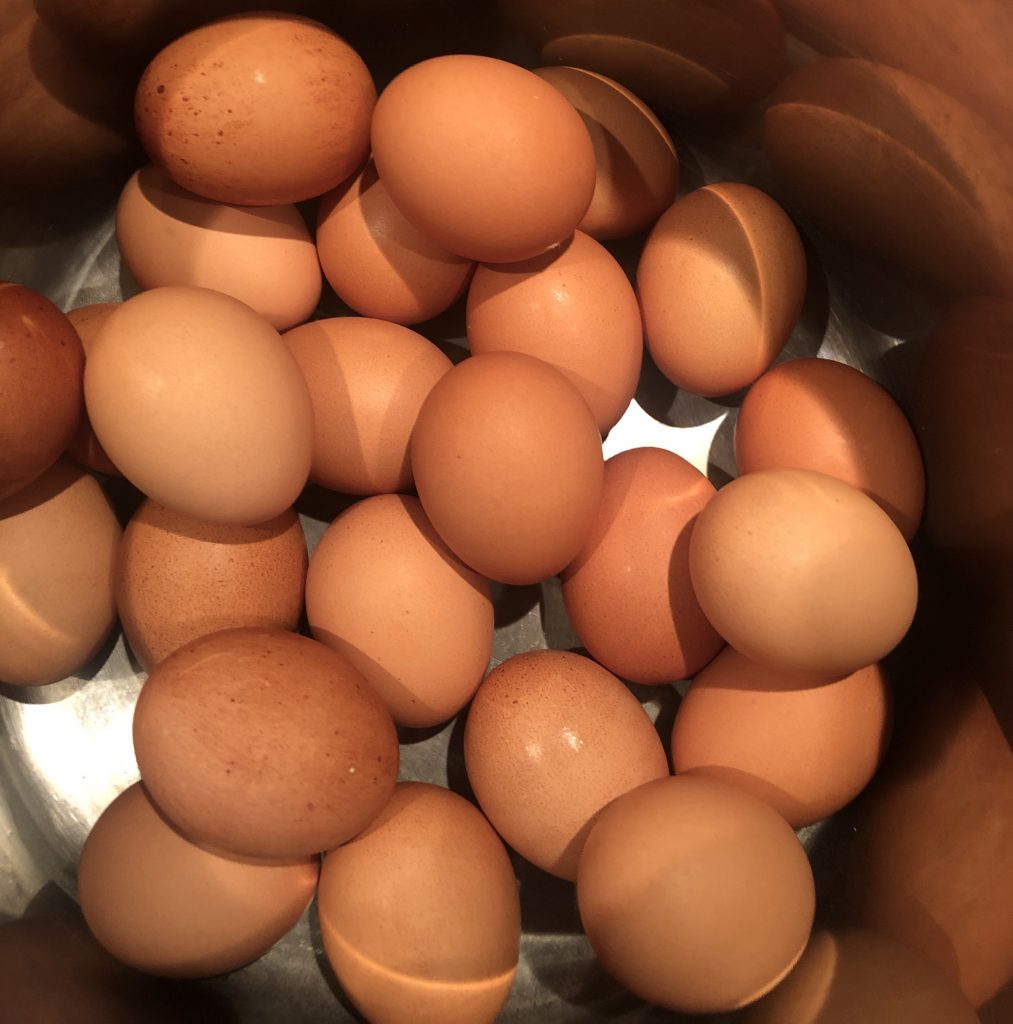
DIET
If you know me, you know I could go ON AND ON on this topic. I’ll save you the expansive paragraph and just park this here: Risk of hip fracture in meat-eaters, pescatarians, and vegetarians: results from the UK Women’s Cohort Study
In a nutshell, meat, eggs, and seafood in your diet are advantageous in building bone. But let me be specific before anyone jumps on the “red meat causes cancer” and “plants are preferred” soap box. Red meat: grass-fed and finished. There’s a difference. Eggs: chicken are supposed to eat grasses, worms, and bugs…and roam around freely. You can probably find this type of egg from a neighbor or friends back yard…yes, even in the city. Factory-farmed chickens fed grains and “feed” aren’t don’t produce the best eggs. And wild-caught, non-farmed fishes are, well….natural, right? Swimming freely, blah, blah, blah.
Protein from animal sources is preferential in muscle protein synthesis (building muscle) and therefore in helping you get stronger, more balanced, and stable. These things contribute to strong bones. The end. Ha ha.
The focus of our piece here was on training, but we wouldn’t have been comprehensive if we didn’t mention that your diet contributes to your success.
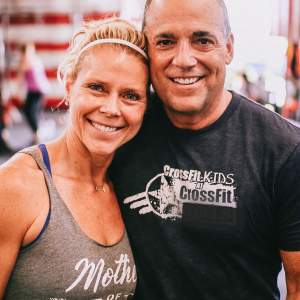
SIGNING OFF
We don’t care how old you are. If you are ambulatory (which is as far as our reach goes at this time), and you have the desire to improve, we’re telling you it’s possible. If you are younger, get to it! Also, no excuses at a younger age.
Our program can be simulated by most experienced trainers. We do prefer a solid background in exercise science or at a minimum, some anatomy and physiology training so that workaround and scaling can be done for the multitude of orthopedic and neurological conditions we often see. Mainstream fitness centers, community recreation centers with onsite trainers, or our preference: CrossFit Gyms – find a program or a trainer. Your interview process should begin with questions about credentials (and sometimes accreditation matters) and end with the trainers’ openness to use non-mechanized functional movements to train you.
Osteoporosis is just one of many conditions seniors worry about and may experience in their later years. Before a pharmaceutical approach is sought out, we highly recommend that younger people “get their act together” and hone in their lifestyle to prevent osteoporosis and that older people entertain a program such as is explained above before succumbing to a medication that may produce an adverse side effect. This is our opinion from our experience in training seniors over the past 13 years, and for Ed, “treating” seniors in rehabilitation for the past almost 40 years, and not direct medical advice. Always contact your physician to discuss starting an exercise program if you have Osteoporsis. And if your healthcare provider is unfamiliar with this type of intervention, we invite you to our “For Medical Professionals” Page to help alleviate any concerns.
